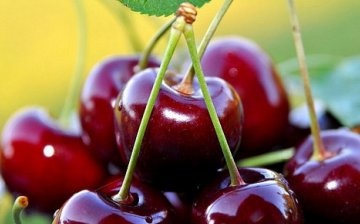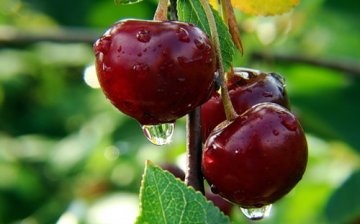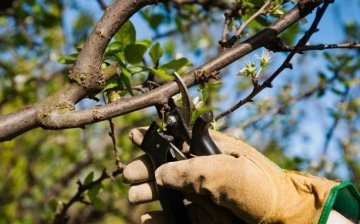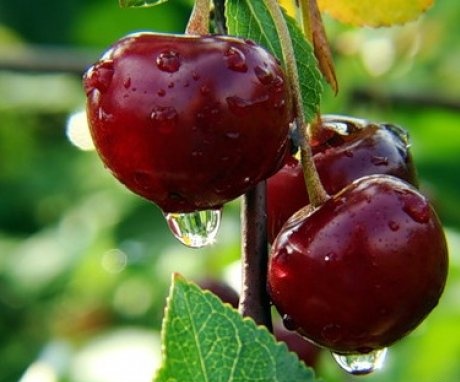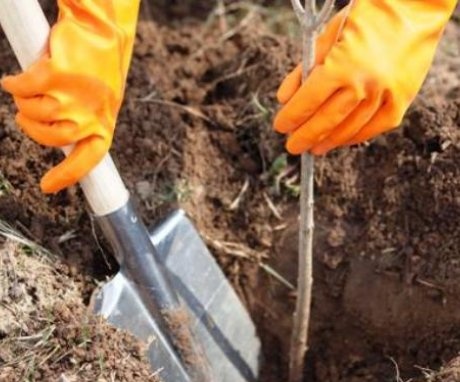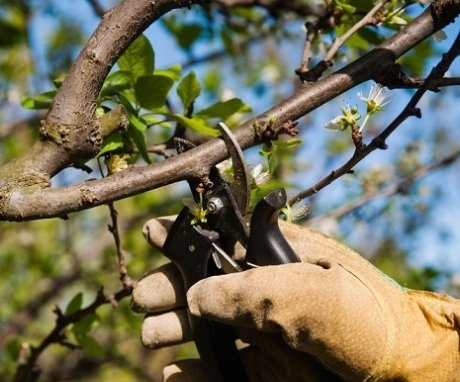Cherries Precious carmine - the highlight of your garden
Varieties cherries there are more than 130. This is the common cherry known to everyone, felted, steppe, sandy... It may seem that this is enough to choose the most delicious, disease-resistant. Nevertheless, new varieties are constantly appearing to meet new consumer demands. One of the most interesting and unusual in taste is Precious Carmine.
Content:
Precious carmine: description
Precious carmine, "Carmine Jewel" - variety cherries, created for special climatic conditions by scientists-gardeners of the University of Saskatchewan (Canada). The first tree of this variety was grown in 1999 by crossing the common cherry and the steppe cherry. Research was carried out for several years, and in 2002 Carmine Jewel was presented for production. The variety is intended for cultivation in harsh continental climates. It is there that he fully manifests his taste and productivity.
The plant is not tall. Therefore, it is called both a tree and a bush. It reaches a height of about 2 m. It is convenient to look after the tree and collect fruits. It easily withstands frost up to 40 degrees. This is climate zone 2b. Precious carmine is a self-fertile variety. It does not need another pollinator to form fruit. From 15 to 40% of all flowers turn into fruits without the participation of bees and other insects. This amount depends on climatic conditions and weather and can vary significantly in the same area in different years.
The first fruits appear 3 years after planting the bush in a permanent place.
They give the maximum number of fruits at 7-8 years of age. Keep fresh in a cool place for a long time, up to 3 weeks. The fruits are relatively large, up to 3.5 g, very juicy. Their color gradually changes as they mature. The ruby-colored berries are not yet ready to eat. Ripe fruits acquire a maroon hue, become almost black. They taste neither like cherries nor plums, sugary-sweet, without astringency. On the Brix scale, the amount of sugar in fruits is 14% (14 g of sugar in 100 g of juice). Cherry juice is colored bright red. The stone is very small, so the amount of pulp is greater than that of cherries of the same size with a regular pit.
Cherry fruits ripen for a long time, from mid-July to mid-August. Although all this time they have a red color and look similar to ripe ones, their taste is different. The fruits reach their maximum sweetness by the time of harvest. Productivity Various sources estimate the yield from 4-8 kg to 15 kg per plant. The fruits do not fall off the branches after ripening. They can hang on branches until late autumn.
The fruits are consumed:
- Fresh.
- They are used to prepare compotes, jam,
- Used for making wine.
The variety is resistant to diseases, practically not damaged pests.
Reproduction and planting of cherries
Until the cherry Precious carmine is a new variety. It is not so easy to find it anywhere nearby to prepare cuttings for vaccinations... It is easier to purchase a seedling in special nurseries. It is worth growing in regions where there is at least a month and a half of heat during the day and cold nights. It is at the temperature difference that sugar accumulates in the fruits.Where the nights are also hot, the fruit can be sour.
They are planted in sunny areas, the cherry Precious carmine does not have any special requirements for the soil.
Grows well on loamy soils. When planting plants in several rows, the distance between the plants is 1 m, between the rows - 1.5 m.If the harvest is planned to be done with the help of special combines, the row spacing is expanded to 5 m.
Sapling planting rules:
- The soil must be fertilized before planting. Usually, useful substances are introduced when planting a plant, mixing them with the soil. Planting pits are prepared a couple of weeks before planting.
- If the resulting tree has a closed root system, the size of the pit should still be standard, about 1 m deep and the same diameter. This will loosen the soil and allow the root system to develop quickly.
- The plant is transferred into a hole, sprinkling with harvested soil mixed with fertilizers... Gently ram it.
- After the pit is filled up, a side is formed from the remains of the soil. It will prevent water from spreading beyond the area of the trunk circle.
- Mulch with peat, rotted manure, a layer of mown grass.
Water after planting at least once a week. If possible, every other day. Water is brought in at least a bucket at a time. Adequate water supply for the first 3 years after planting is especially important.
Cherry Care Precious Carmine
Cherries Precious carmine requires little maintenance.
- In early spring, before the start of sap flow, the bush is cut off. This is usually done in the snow. The plant is formed in the form of a vase with an open center or in the form of a bush.
- It is better to fertilize cherries in spring. You can bring two or three buckets of rotted manure into the trunk circle. Before this, the soil must be loosened. Introduction fertilizers in the fall can damage trees in winter.
- They constantly monitor that moisture does not stagnate at the roots of the cherry. Clay soil can contribute to this phenomenon. Therefore, when planting on heavy soils, it is advisable to arrange drainage for each tree.
- In the fall, during the period when the tree sheds its leaves, you need it abundantly to water... This will allow the Precious Carmine cherries to easily endure severe frosts and reduce the risk of frost cracks. You can protect against frost and rodents by wrapping the barrel with old tights or other improvised means. Such protection needs to be carried out for several years.
- Whether to leave the grass between the trees is up to each owner to decide for himself. The main thing is that it does not drown out young seedlings, does not take moisture and nutrients from the soil from them. Leave the grass for the winter, especially weeds, between trees is not recommended. This will increase the risk of rodent damage to the bark of the seedlings. The branches can be eaten by various herbivores, for example, goats. Therefore, you need to make a fence.
- A slight infestation of Precious Carmine cherries by cherry fly and other pests was noted. To combat them or for prevention, trees are treated with insecticides 2-3 times per season. In rare cases, cherries are infected with bacterial cancer. Infected plants must be completely removed by burning all parts of the plant.
More information can be found in the video:



